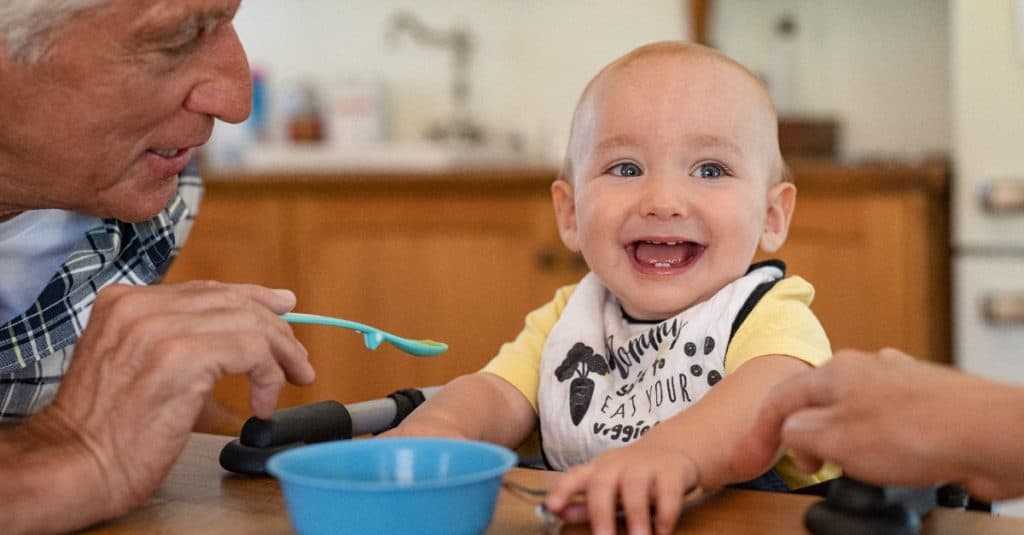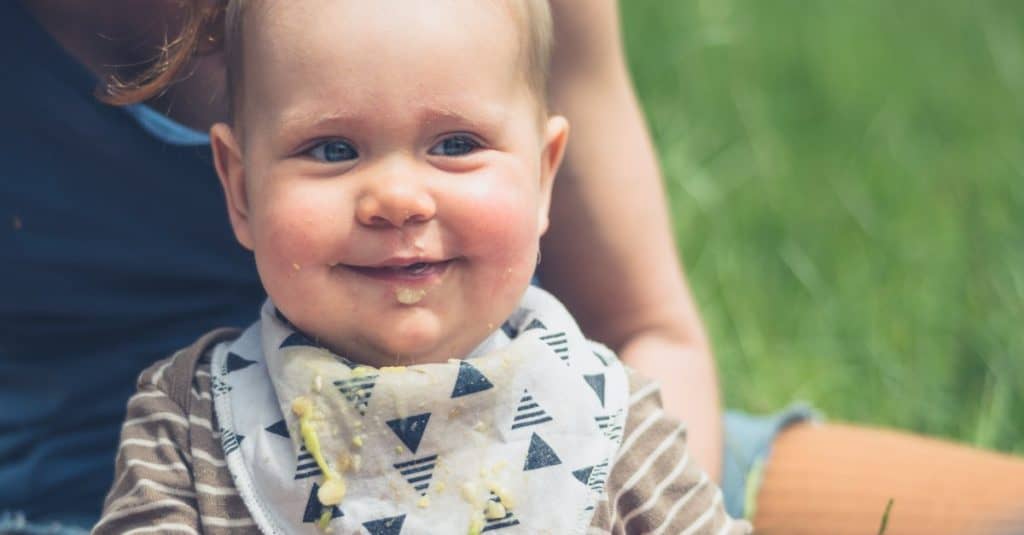In this day and age, there is no shortage when it comes to choices and options for baby gear and gadgets. You can find many things on the market that are designed to make life with a newborn baby easier. Bibs are just one of the many baby items that can do just that.
While bibs aren’t a requirement for babies, they are certainly very practical and useful to have around. They keep your baby’s clothes clean and mess-free during feedings, leaving you with less laundry to do. Plus, they come in all sorts of fun colors, designs, and styles for you to choose from.
Newborn bibs are some of the most quintessential baby items that nearly every parent buys or gets gifted in advance. Because they come in an extremely wide array of designs and styles, it can be tricky to figure out which one will suit your newborn best. This article contains a guide and some tips on selecting and using bibs with newborns.
Does Newborn Need Bibs?
Why Do Newborns Need Bibs

A bib is a piece of lightweight material such as cotton, bamboo fiber, silicone, or flexible plastic that you fasten around your baby’s neck. The bib hangs over their chest to keep their clothes clean during mealtimes.
Newborn babies tend to spit up quite a bit. In the first year or so of life, the ring of the esophageal sphincter muscle that closes off to protect the esophagus from gastric reflux has not yet had enough time to fully mature. Because of this, milk and other stomach contents may come back up and out of your baby’s mouth as spit up.
Leaking milk, poor latching, and drooling can also contribute to messes while feeding a newborn. A bib around your newborn’s neck and over their clothes will help contain milk, spit up, and other food debris that inevitably makes an appearance while feeding a newborn.
Both breastfed and bottle-fed babies can benefit from a bib while feeding. They also help keep your clothes clean while you burp and feed them. Depending on how much drool and spit up your baby makes, you may go through anywhere from 5 bibs a week to 5 bibs a day.
When Should You Start Using a Bib

When you start using a bib with your baby is up to you. Some people begin with newborn bibs as early as 1-2 weeks old, when they begin spitting up. Newborn babies less than a week old usually only drink a teaspoon or two of colostrum at each feed and might not spit up very much yet.
Some babies might not spit up as much and their caregivers might decide only to use bibs once their baby begins weaning and eating solid foods. If this is your case, you might choose to forego bibs for the time being and use a burp cloth or towel to catch any spit up and protect your clothes instead.
You might choose to use a bib from the get-go, hold off on it until they are a couple of months older, or never use them at all depending on what works best for you and your baby. Some babies (and their clothes) fare well enough without a bib, while others are naturally messy eaters and will need a little more help keeping their clothing clean and spit up free.
Things to Consider When Choosing Newborn Bibs
Purpose
If you are looking for a bib for your newborn, chances are, you’re going to want something simple that you won’t mind getting dirty or stained. A simple, standard newborn bib made of a soft but durable fabric such as cotton or bamboo fiber that stands up to frequent washing cycles will be your best bet.
If you will be traveling with your baby somewhere you won’t have access to a washer, you may want to bring a pack of disposables so you won’t have to worry about cleaning. You could also keep a few in your car or diaper bag, in case you get caught out and need to feed your baby.
Versatility and Functionality
You can expect to use a bib anywhere from the day your baby is born up until they are 3 years old. If you plan on using bibs throughout your baby’s toddler years, you may want to consider a bib that comes with adjustable closures, so that you can continue using the same bib as your baby grows.
If your baby is going through the teething process and is drooling quite a bit, a teething bib made of absorbent material pulls double duty as a drool catcher and teething toy.
If you are looking for a feeding bib, a dishwasher-safe silicone option that you can pop in the dishwasher with the rest of the dirty plates and utensils is quite a convenient feature for a feeding bib.
Designs
Baby bibs can be found in pretty much any color and pattern under the sun. While bibs are generally unisex, there are quite a few with designs geared towards baby boys and baby girls. You can even get ones customized with your baby’s name.
Types of Baby Bibs
Bibs have come a long way since they were just rectangular pieces of cloth on a string. Nowadays, baby bibs come in a wide array of designs, materials, and styles for you to choose from.
Newborn Bibs
These bibs are made extra tiny to fit a newborn baby’s neck. They are made with a lightweight and absorbent cloth and typically have Velcro straps or snap buttons for fastening and removal. A newborn bib is usually geared towards babies 0-6 months old who have not yet started solids.
Drool Bibs
Drool or dribble bibs are smaller than bibs you would typically use during meals or while feeding. They are meant to be worn for longer periods outside of feedings, such as during awake play and tummy time.
A baby’s fine oral motor skills do not fully integrate until they are 3 years old. Until then, drooling and blowing raspberries or bubbles are fairly common occurrences. Certain events, such as teething and illness may also cause babies to drool more.
As the name suggests, a drool bib has a high neckline that catches saliva and keeps it from running down the neck and chest and prevents skin irritation and drool rash from forming. It also keeps drool off your floors and furniture for babies who have begun crawling and cruising.
Teething Bibs
Teething bibs combine the functionalities of a drool bib and a teether. These absorbent bibs usually come in a triangular bandana shape that comes down to around the mid-chest level. The bib has a silicone teether sewn onto the tip for a baby to hold to and chew on.
Feeding Bibs
Feeding bibs are often made of easy-to-clean waterproof material such as silicone or flexible plastic and have a small bowl-shaped receptacle at the bottom to catch dropped food and liquids. These bibs are generally used for babies who are just beginning to eat solid foods.
Smock Bibs
Smock bibs are worn over the head like a shirt. They are usually long-sleeved and come down to the hip or the knee. Because they are quite long and full coverage, they are one of the best options for messy eaters and babies who enjoy playing with their food.
Disposable Bib
Disposable bibs are single-use bibs that secure around your baby’s neck using adhesive strips. Some also come with a built-in crumb catcher which unfolds from the bib when you take it out of the pack.
Because they are single-use items, they are not the most cost-effective or sustainable bib option, but they do work quite well for when you are out and about or traveling with your baby and need something to keep their nice clothes clean.